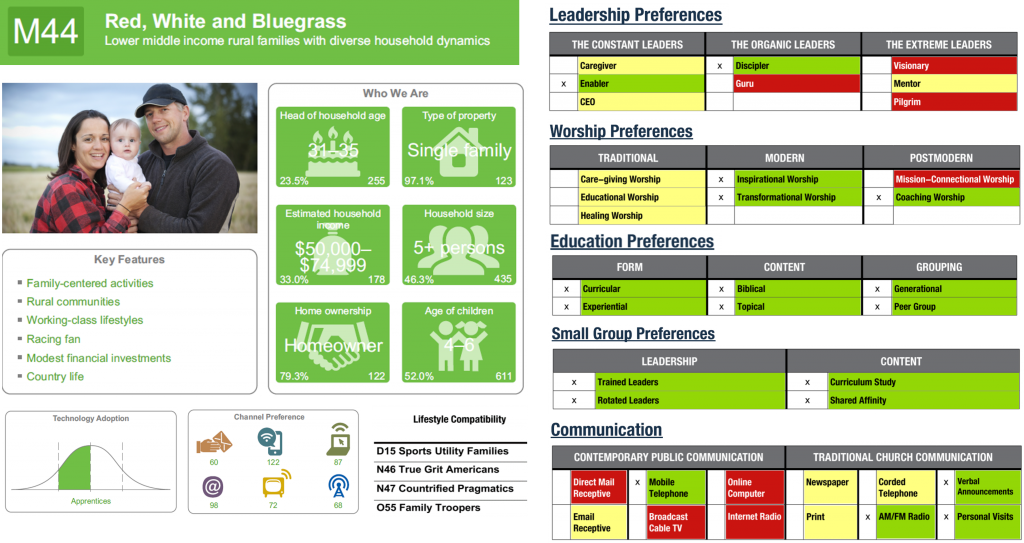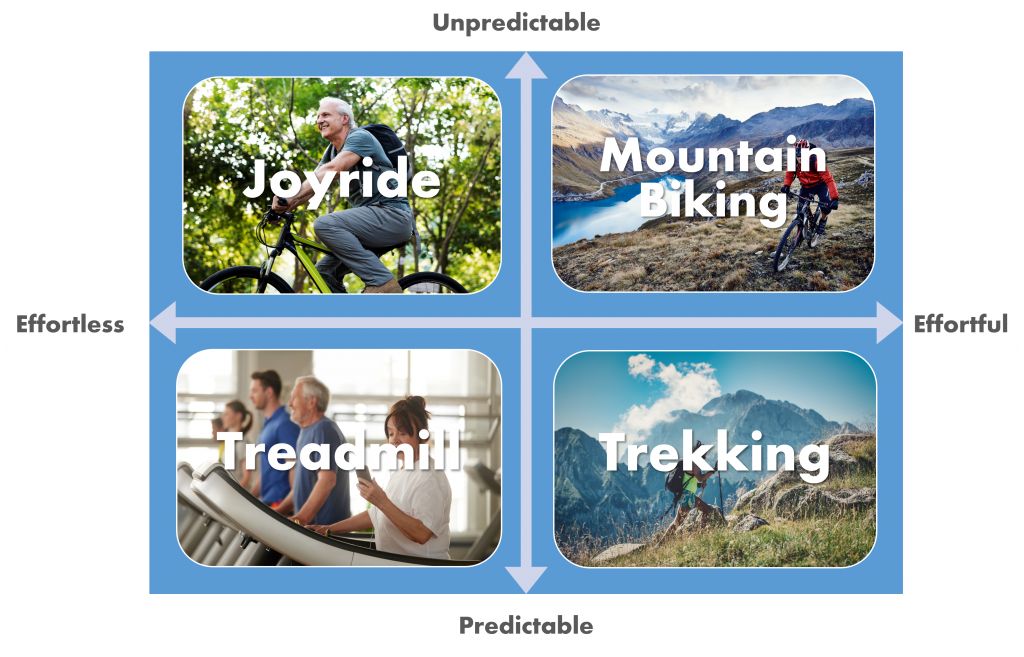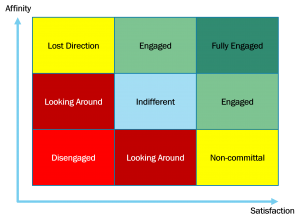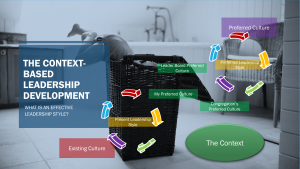Experian’s Mosaic® USA classifies all U.S. households and neighborhoods into 71 lifestyles, painting their socio-demographics, behaviors, and culture. The company helps marketers with the most accurate and comprehensive perspective of target customers. Why is it relevant to ministry? It is because we are trying to reach out to the same population. 
They also understand the importance of diversity, especially in today’s culture. Everyone prefers to take an authentic journey to something, whether it is to purchase things, enroll in services, or join affinity groups. The journey to belonging to a congregation is not an exception. The old ministry paradigm is no longer practical for this reason. Well-established churches developed discipleship programs, starting with the seekers’ class and new member class, followed by joining one of the small groups, servant class, minister class, and so on, to lay out the path to advance in the spiritual journey. They thoughtfully designed and developed the master path for the spiritual journey for everyone, based on their belief that they should make newcomers’ experiences as effortless and predictable as possible. The master plan required many years of dedication and preparation from experienced ministry developers. Once it was plugged into the congregational life, it produced a remarkably massive return on investment. Even other churches would follow the lead and adopt it into their congregations, expecting the same ministry success.
However, today’s least popular idea is the “one size fits all” approach. The way of perception has dramatically changed over the last decades. We used to say, “I believe so that I may understand,” followed by, “I believe what I can understand.” The “one size fits all” idea may be somewhat effective for these Premodern or Modern perceptions. The Postmodern affirmation says, “Understanding is no longer a belief.” The majority no longer assumes that Christianity is true and now explores the meaning and discover faith in community, relationships, and direct experience. Today’s people want to explore their life in an authentic and meaningful way to their culture. Is your church equipped to offer multiple experience maps for their spiritual journeys relevant to the people you seek to reach?
We know we cannot satisfy everyone’s preferences. That’s the starting point. People feel more authentic and meaningful when substantive, shared interests drive an experiential journey. Based on people who display common characteristics, groups of people will fall into a specific category with a particular preference for their experience. Thus, the spiritual journey map doesn’t have to be complicated. Even sophisticated marketing companies assert that four experiential journey paths are enough to cover most of their target customers. It could be good enough for those who would be interested in Christianity. Most churches have a dominant path already established. Adding a new course and creating an experiential journey matrix whenever anticipating (a) potential person(s) showing a different character will be a strategy. Creating the matrix should be subject to revisions and multiple iterations that make them crucial to your ministry. Ultimately, it is all about seeing their experiences from newcomers’ viewpoint and developing (a) response(s) at the right time to advance in their spiritual journeys.
 The journey matrix is the visual roadmap of newcomers’ experiences with your church. It is to map their engagement with your congregation, worship services, and various programs from start to fully engaged. These maps usually represent their feelings about the congregation, critical thoughts about their faith journey, the channels and mediums through which they interact with your ministries, and how they respond to each spiritual element carefully designed by the church and significant spiritual journey markers. Before making it sound too complicated, let’s explore a sample experience map. In today’s culture, the experiential journey map can be categorized by two dominant factors, one axis from predictable to unpredictable and the other from effortful to effortless.
The journey matrix is the visual roadmap of newcomers’ experiences with your church. It is to map their engagement with your congregation, worship services, and various programs from start to fully engaged. These maps usually represent their feelings about the congregation, critical thoughts about their faith journey, the channels and mediums through which they interact with your ministries, and how they respond to each spiritual element carefully designed by the church and significant spiritual journey markers. Before making it sound too complicated, let’s explore a sample experience map. In today’s culture, the experiential journey map can be categorized by two dominant factors, one axis from predictable to unpredictable and the other from effortful to effortless.
Some people want their journeys to be easy and routine, and others want to be challenged or delighted. Based on these two factors, four spiritual journeys can be defined: Treadmill is effortless and predictable and is suited to those who are familiar with church practices. You can imagine the experiences at 5.0 star rated Starbucks. Joyride is effortless and unpredictable, and suitable for those looking for a community embedded with ongoing fun activities. It is like a half day at a local street fair. Trekking is effortful and predictable and is suited to those looking for a church offering them to achieve challenging long-term goals. It is like a 60-day weight loss program around the Easter season before Summer begins. Mountain Biking is effortful, unpredictable, and an excellent match for those looking for a community that facilitates their passion projects. It is like organizing a clean water project for a village in Africa and inviting your community to co-organize fund-raising and professionally organized project execution abroad. Each type of journey has its design principles. At the same time, Treadmill should offer consistent touchpoints in familiar sequences, Joyride, continually varied moments of joy. While Trekking should challenge goal-posting with significant objectives broken down into small steps, Mountain Biking should offer autonomous variation and journey tracking.
 You can apply the above to your existing church members. I invite you to create the journey matrix for them. To help you, I present a matrix for grouping them in terms of their engagement with your ministry. The level of engagement can be categorized by two factors, their affinity with the congregation and their satisfaction level with your ministry. Creating a journey map into the green zones, Engaged and Fully Engaged, from yellow, blue, and red zones could make your congregation resilient and motivated for future ministries.
You can apply the above to your existing church members. I invite you to create the journey matrix for them. To help you, I present a matrix for grouping them in terms of their engagement with your ministry. The level of engagement can be categorized by two factors, their affinity with the congregation and their satisfaction level with your ministry. Creating a journey map into the green zones, Engaged and Fully Engaged, from yellow, blue, and red zones could make your congregation resilient and motivated for future ministries.






